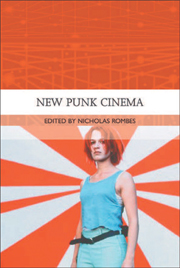2 - Italian Neo-realist Influences
from PART I - BACKGROUNDS AND CONTEXTS
Published online by Cambridge University Press: 05 August 2013
Summary
Contesting Realities
In the United States, punk cinema, like the sonic and cultural matrix from which it arose, has long been defined by a ‘do-it-yourself aesthetic. Employ-ing a myriad of relatively inexpensive film-making techniques, from location-shooting with amateur performers to cut-rate special effects and rudimentary editing, talented visionaries, such as Nick Zedd, Beth B and Richard Kern, created a multitude of challenging works. Revelling in film's materiality and artifice, these visual artists critiqued the dominant culture's economic, social and political logics. Consequently, in their distinctly counter-cinematic structure, a narrative and visual style marked by the ‘desire to play unrestrained within the terrain of the visual, free from the political, social, cultural, and financial constraints of dominant cinema’ (Sargeant 1999: 9), many of the earliest cinematic productions linked with the US punk rock scene resemble the films of Jean-Luc Godard and other prominent ‘New Wave’ and avant-garde directors of the 1960s. This freedom from, and at times outright rejection of, commercial film-making practices allowed for the exploration of previously ‘taboo’ subjects and images, frequently culminating in visually arresting reconsiderations of conservative notions of ‘obscenity’ and ‘taste’.
Not all of punk cinema's foundational texts fall exclusively within the domain of the ‘experimental’ or avant-garde, however. Several of this cinematic tradition's offerings mobilise familiar documentary and cinéma vérité aesthetics to present fictional and ostensibly ‘non-fictional’ accounts of marginalised identities and stigmatised subcultural practices. Of the numerous directors to apply an overtly verist aesthetic, Penelope Spheeris is perhaps one of the most widely known.
- Type
- Chapter
- Information
- New Punk Cinema , pp. 39 - 55Publisher: Edinburgh University PressPrint publication year: 2005



